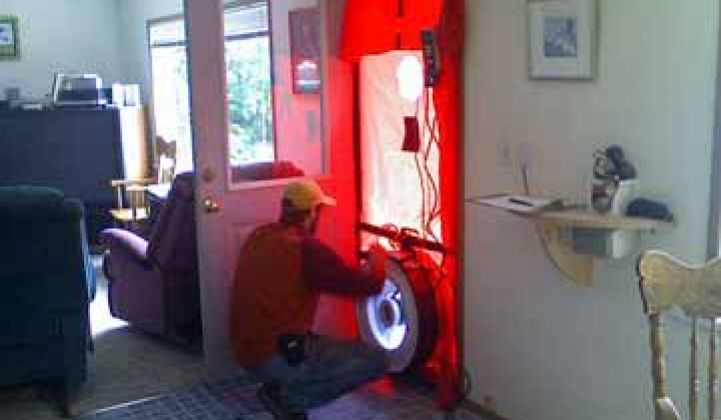Stop calling it weatherization, and while you’re at it, don’t use the word 'retrofit' either. Maybe take in an improv comedy course or two. These are just some of the lessons from Lawrence Berkeley National Laboratory’s recent report, Driving Demand for Home Energy Improvements.
The Department of Energy recently announced that 200,000 low-income homes have been weatherized under the Recovery Act, and the program is on track to weatherize nearly 600,000 homes. But widespread home energy improvements are elusive, often due to upfront cost and lack of information about available credits and loans through local and national programs. The LBNL report examined 14 case studies of retrofit projects across the U.S. as an example of different local approaches that yielded considerable savings. With approximately 30 percent of greenhouse gas emissions coming from the residential sector, it will be imperative for utilities and local governments to craft careful plans to cut general and peak demand in homes to reach energy reduction goals.
Rather than just putting the information out there for the public to absorb, organizations must take a much more focused approach in their communications, according to Merrian Fuller, Principle Research Associate at LBNL. “The bottom line is that providing information and financing isn’t sufficient,” Fuller said during a DOE Technical Assistance Program webinar.
For starters, put the message in terms people know and understand. Sell something people actually want. “Often people already assume they’re doing everything they can, so figure out what messages get beyond that,” said Fuller. LBNL found that comfort, health reasons (such as reducing allergens or mold), appealing to people’s social norms or even becoming a self-reliant American were all preferable to just talking about energy savings, or even bill savings. “Don’t assume saving 20 percent on your energy bill will motivate people,” she warned.
She went on to note that communications styles matter. People need hard examples. Instead of telling people their house is leaking energy, instead they need to hear that their hard-earned money is literally flying up the chimney, or that their house is the equivalent of a car getting only 15 miles per gallon. Carl Nelson, the Program and Policy Manager at Center for Energy and Environment in Minnesota, said his group leaders go through training with an improv comedian to more effectively lead community information sessions. They also shy away from the word 'audit,' because after all, people rarely associate the word with anything positive. “We try not to make it boring,” said Nelson. “We set up the expectation that they’re going to have this home visit and commit to making a major investment in their home.”
Once you have mastered how to talk to people in everyday language, the next important step is engaging the right groups. Both Fuller and Nelson repeatedly talked about getting buy-in from prominent local organizations, especially non-profits. It’s no secret that no one really likes their utility, and so messages can be much more effective when they come from a prominent community leader or group.
The next cohort that should be lined up for cooperation is contractors. That seems like an obvious one, but different regions have different organizations and approval methods for contractors and homebuilders to do retrofits, and so it is important to understand and seek out the right groups. “Design a program contractors want to sell,” said Fuller. That means engaging them from the get-go, instead of after a program is in place.
Finally, scaling up is the biggest hurdle for many of these projects. The initial program should not try to reach the broad community; instead, it should focus on early adopters that will make it a success in its early stages. “It’s really important to remember you can’t reach everyone in the initial launch,” said Fuller. As the program scales up, there should be various messages to various groups surrounding different demographics and values. Once people are involved, the process needs to be as streamlined as possible, without multiple home assessments or convoluted loan processes.
The LBNL report also highlights how more metrics need to be in place to find out effective strategies. Fuller encouraged experimentation by utilities with key performance indicators set out early on. “It needs to be cost effective or else the utilities will not fund it on an ongoing basis,” she said. “We have to know more about what works and what doesn’t. There’s a surprising dearth of information.”



